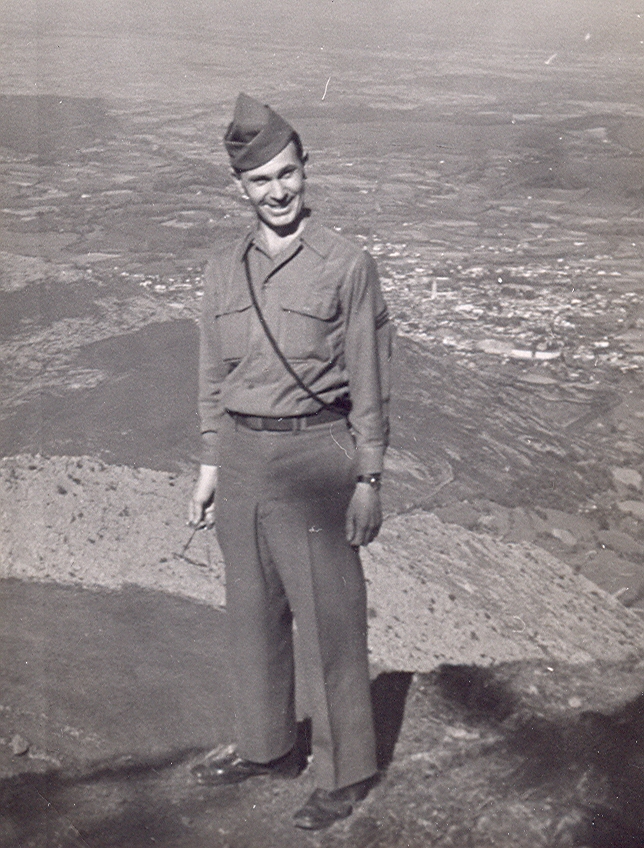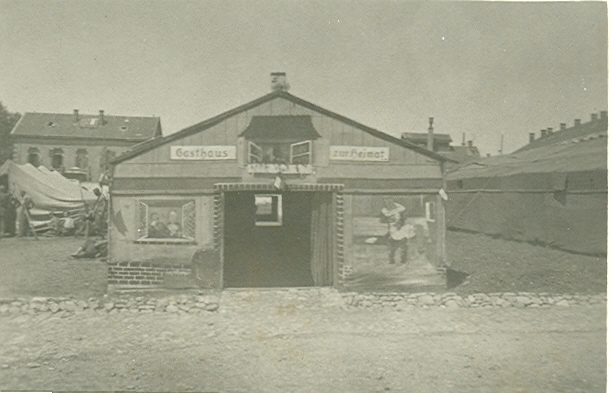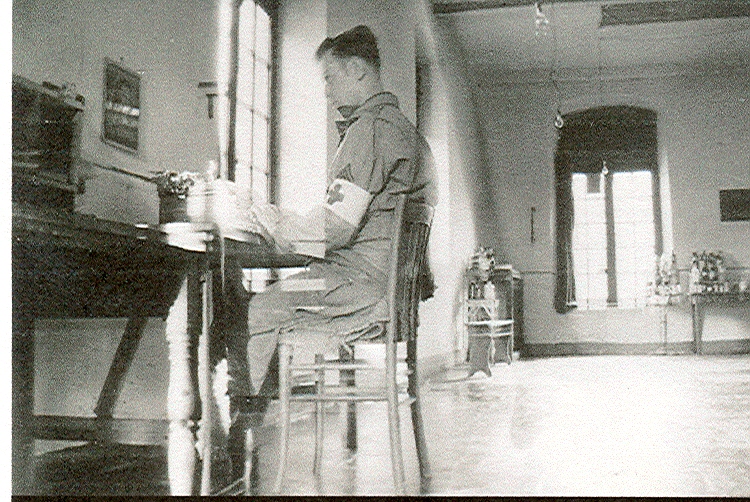
We have received communications from Ehud, an American veteran who served at the Stenay P.O.W. Camp in charge of the infirmary. Below are some of his recollections, together with photographs taken during the war.

November 1944 has passed and one day the 1st Sergeant informed me that I was being transferred to another outfit.
After having been with the 95th General Hospital this long that really hurt to be moved somewhere else.
On the 4th of December, 1944 I boarded a jeep and was on my way to the new assignment at the POW camp in Stenay
for German prisoners. I consider myself lucky though in being transferred to this new camp.
At first the influx of prisoners was a small dribble, but steadily increased to an avalanche.
The peak month was reached in March 1945 when this enclosure received from the 3rd Army 135,000 prisoners-of-war.
At first the prisoners arrived by truck, but in a short while railway operations had repaired the rail lines
to the forward areas and then they began to arrive by rail.
The prisoners would arrive forty to a box car and about two thousand per train, anytime day or night.
By coordinating with the local RTO and with the French railway, the enclosure knew in advance of the arrival times
of these trains and thereby were able to send an escort guard to guide the prisoners to camp.
As the tempo of the 3rd Army's attack increased, anywhere from four to eight trains arrived daily.
Immediately after receiving the prisoners at the enclosure it became necessary to feed and house them for the
balance of their stay. This represented a huge problem as according to the Geneva Convention it is necessary to
supply hot food on a comparable basis with American troops. To do this it became necessary to improvise cooking
vats, cookers, ovens etc. At times it became necessary to supply rations for 10,000 to 30,000 prisoners.
This meant that all motor transportation had to be used to procure the necessary food.
Upon arrival in camp the prisoners were deloused, done by German medical personnel supervised by the American
staff. Huge quantities of DDT powder was used for this purpose to insure that no diseases by body lice were spread
around in the camp.
Also at this time any prisoner with a communicable disease was separated from the rest and sent to a General
Hospital for treatment. Then housing has to be provided for the prisoners while they are in this compound.
Many of them are housed in permanent buildings, but others are housed in temporary tent type enclosures.

Captured prisoners came into camp in tattered clothes and therefore needed to be issued suitable clothing.
Every bit of usable clothing was saved and repaired by the POW's themselves.
For the purpose of screening, each new POW is interrogated individually for any military information.
If an individual has indicated any special information he is sent to higher headquarters, or even to
Washington, D.C. They are then sent to separate groups where they receive their Internment serial number and a
permanent record which is a counterpart of the American Service Record. This form when filled contains the
prisoner's name, rank, internment number, German Army serial number, nationality, next of kin, home address,
date of birth, finger prints and other identifying marks.
During this process the prisoner fills out a capture card which is sent through the Red Cross to the next of
kin informing them of his capture. The POW's have also been separated into three groups: (1) those medically able
to work and (2) those not medically able. (3) those who belonged to the SS division and other trouble makers.
If any U. S. Army unit has need of POW's for labor, they sent in a request for type needed and if they have
adequate facilities to handle POW's they can come and pick up the prisoners to help in the Army unit.
All other prisoners not kept for labor are evacuated to the rear areas as soon as transportation is available.
Most of these evacuations are made via box cars by rail with adequate food and water for the entire trip.
Three or four guard cars are spotted throughout the train as there are generally about forty or fifty cars in the
trainload.
From October to December this compound averaged two evacuations per week. During the Battle of the Bulge a
great influx of prisoners were arriving when the 3rd Army started its counter attach. Orders at this time were to
evacuate all POW's as we were too close to the front lines. However, we did keep key German personnel that worked
in the hospital area. Therefore it was necessary to have from one to three evacuations per day.
During the months of February-April the flow of POW's increased to about six to eight train loads arriving daily.
And by the same token the same amount had to be evacuated daily, but with good organization the task was
accomplished.

Many thanks to Corporal Ehud and his family. He has provided more photographs and much more information that I shall post soon. Please send us your stories and pictures about Stenay!

This site is sponsored by SweetFERN media and Eyes of the Owl - UsedBooks.TK. Your sponsorship would be welcome. Please contact us by e-mail at sweetfernmedia@yahoo.com and we will promptly reply.